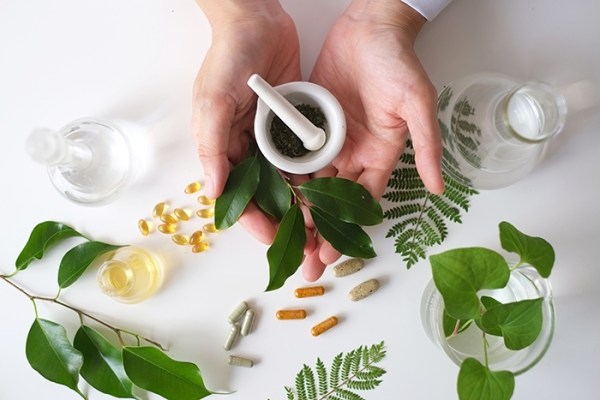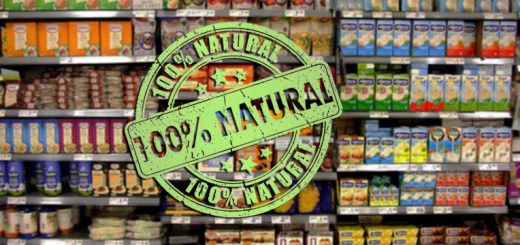
Determining Ingredient Quality
It’s very difficult to ascertain ingredient quality by reading a label. This is due, in part, to labeling laws which benefit companies, not consumers. For example, did you know that chicken feathers, or feather meal, can be used in dog food and labeled as “hydrolyzed chicken protein”?
Nor can a consumer ascertain by reading a label the source of the ingredients, the country of origination of each ingredient, how an ingredient is grown/harvested/processed, whether it was made in a laboratory, or if it’s a man-made reproduction of what we find in nature.
My father ran a large regional commercial bakery known as Drake’s Cakes back in the late 1950s to late 1960s. He developed some of the iconic products: Ring Dings, Yodels, Devil Dogs, and he used only imported German and Swiss chocolate. When his corporate bosses questioned the expense he said, “we use this chocolate because it is the finest and we want a superior product for the consumer.”
My dad was a stickler for ingredient quality. As fussy as he was about chocolate, he was equally fussy about sugar, butter, and flour. He ran that bakery on the premise that quality ingredients make a better confection.
Since BioStar’s inception, my focus has been on measurable and quantitative quality of ingredients, not the cost.
The Reishi Mushroom Conundrum
A study in Scientific Reports from August 2017 evaluated the quality consistency of reishi mushrooms in dietary supplements in the US. Nineteen dietary supplements containing reishi were tested for the active components of reishi mushrooms, triterpenes and polysaccharides including B-beta-glucans.
Only 5 of the 19 dietary supplements were found to be authentic with triterpene and polysaccharide (beta-glucan) content.
One of the reasons so many reishi supplements failed the quantitative analysis is that American mushroom companies tend to grow reishi on starch biomass, such as rice, in a laboratory. The end result is a powder made of mycelium and grain. This form results in low to zero beta-glucans.
The traditional Chinese method of cultivating reishi and other mushrooms is on logs of wood, outdoors. A method still employed by premium Chinese mushroom growers today.
It is very difficult for consumers to ascertain the quality of medicinal mushrooms by reading a product label because it’s not clear how the mushrooms were grown.
The Consumer Conundrum
Many identically labeled ingredients are difficult to differentiate between one product and another simply based on what the label says.
Price is not always a barometer of ingredient quality. There are supplement companies that charge premium prices for products with ingredients that are not of a substantially high caliber.
I can say this with absolute certainty: there are enormous differences in specialty raw materials, nutraceuticals, medicinal mushrooms, plant and food extracts, and whole food ingredients.
Freeze-Dried Fruit Powders
BioStar uses various fruit powders like pomegranate, orange, mango, and blueberry in our formulas. We only use freeze-dried fruits, which is a form of processing fruits into fruit powder, and doesn’t require maltodextrin or any additive. The process uses frozen fruit placed in a refrigerated vacuum system and dehydrated. The cell structure of the fruit remains intact, and the end result is that the freeze-dried fruit powder retains the color, flavor, and nutritional value of the fruit. This is the process that Biostar’s fruit powders undergo.
Fruits can also be processed by drum-drying, which includes the use of maltodextrin, a highly processed starch, rated high on the Glycemic Index, meaning it can cause a spike in blood sugar. Biostar avoids maltodextrin, and ingredients made with it.
Companies are not required to list an ingredient as drum dried or even freeze-dried.
Patented ingredients and extracts
Patented ingredients and extracts are more costly raw materials than simply a plant powder or common nutraceutical like quercetin glycoside. That’s because the patented ingredients and extracts have gone through the scientific process: research, testing, and beta testing with humans and animals. All of which can take many years and is very expensive.
In many cases, the patented ingredients and extracts demonstrate higher bioavailability and efficacy, which provides better results, and in some cases, faster results. Patented ingredients are manufactured under strict quality control, proven stability, and safety.
Patented supplement ingredients must adhere to the level and dose at which the research has found them effective.
Patented ingredients and extracts are backed by science, ensuring potency, purity and safety. For the consumer, patented ingredients provide peace of mind: quality and efficacy.
It’s not uncommon for supplement companies using generic ingredients to refer to studies that have been done on patented material. This is known as borrowed science.
“Proprietary” ingredients compared with “patented”
Sometimes companies will list an ingredient or group of ingredients as “proprietary.”
This is not the same as “patented.” “Proprietary” as it is used on supplement labels means the company does not want to reveal the precise amounts of each ingredient in the proprietary blend to avoid another company copying or duplicating the formula.
I know some consumers are frustrated with ingredients labeled “proprietary,” as it does not add to transparency. If a horse is on another product with some of the same ingredients, the consumer is left wondering if the dosage is correct.
BioStar’s patented ingredients
The first patented ingredient we began using was Ashwagandha extract in 2007. No other equine company had ever used this extract. Actually, no equine or canine supplement company was using Ashwagandha despite its thousands of years of use in animals and humans in Ayurvedic Medicine.
Our patented Ashwagandha extract was ten times the cost of powdered Ashwagandha. But with three published studies, I was convinced that this extract was the way to go. The success of the patented Ashwagandha extract in Biostar’s Equilibrium EQ and later in Thera Calm EQ showed me the importance of patented ingredients to provide real results.
To find these specialty ingredients, BioStar relies partially on our contacts in the human supplement industry, because human supplementation research and published studies is in many ways ahead of equine and canine supplementation.
BioStar was the first equine supplement company to use:
- Patented Ashwagandha
- Patented Shilajit (Primavie®)
- Patented Chromium (Crominex® 3+)
- Patented Amalaki (Indian Gooseberry) (Capros®)
- Patented Boswellia resin and quince extract (AlvioLife®)
- Patented superoxide dismutase (SOD) (GliSODin®)
- Patented Boswellia with bioavailable AKBA (Apresflex®)
- Patented Quercetin Phytosome (Quercefit®)
- Patented mineral proteinates
- Patented Astaxanthin (AstaReal®)
- Patented Fermented Ginseng (GS15-4®)
Other quality factors
How a product is produced (good manufacturing practices), including FDA inspected facilities also are measurement of ingredient quality as it relates to product safety. No one wants to give a contaminated supplement to their horses or dogs.
Membership with the National Animal Supplement Council (NASC) is another marker of a supplement company following rigorous manufacturing, and labeling practices. BioStar has membership with NASC and follows their policies.
Companies and products that are USDA Certified Organic or certified Non-GMO have also undergone vigorous on-site testing as well as continuing documentation. From Farm to Table literally means traceability of ingredients from the farmer to your horse’s feed bucket, and every stop along the way.
As a consumer
It frustrates me no end when I go to websites for supplements or feed and I have to dive down various other pages and links to eventually find ingredient listings. Some companies are wonderfully transparent, so it’s easy to find ingredients. Some supplement companies don’t list the ingredients at all; instead, they push you to “BUY HERE.”
The only supplement company in the equine and canine industry that lists the country of origin of ingredients on its web pages is BioStar. This to me is surprising and a sad commentary. If the equine and canine supplement industry is going to stand up for ingredient quality, we need to stand up for transparency too.













